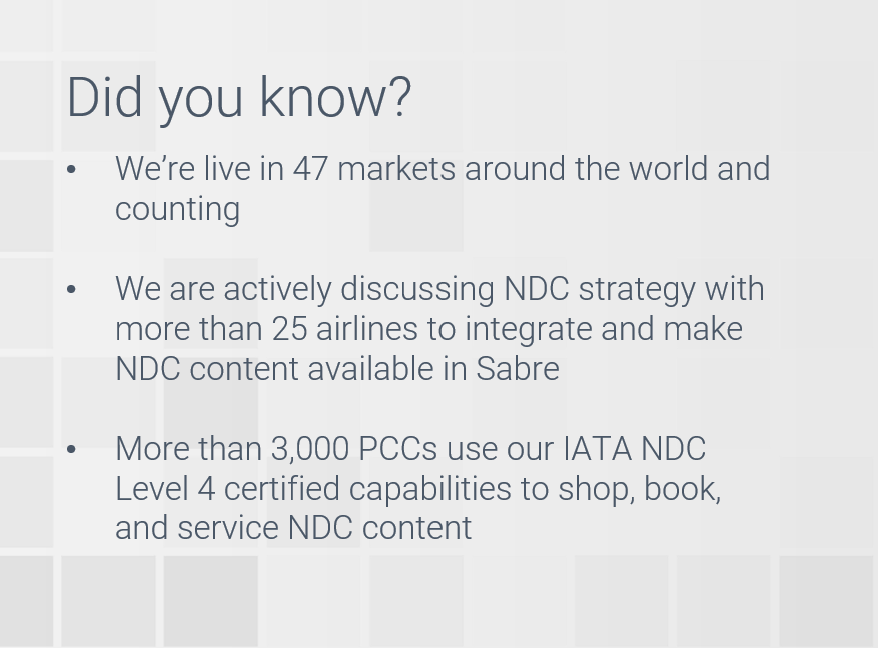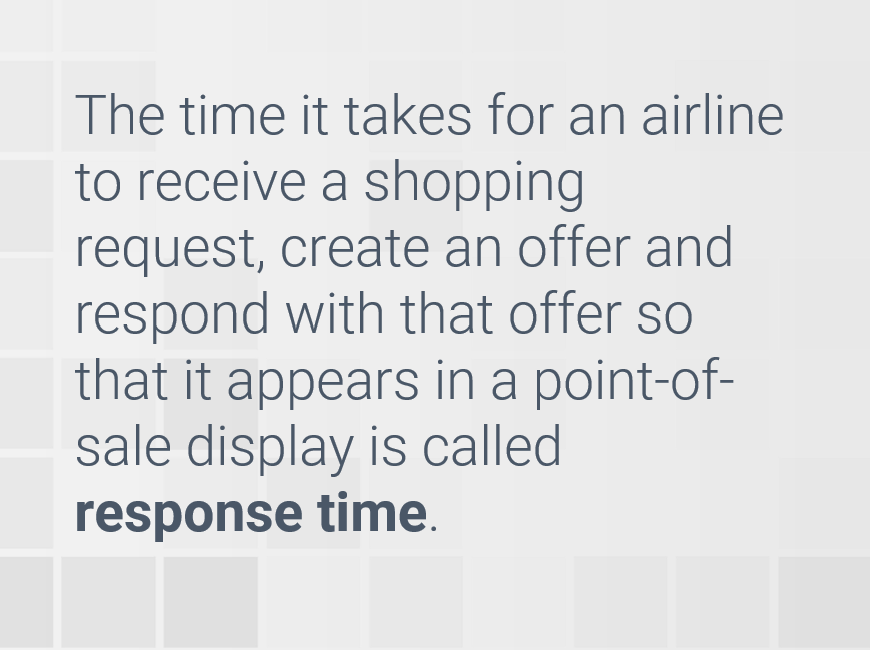Creating a more robust marketplace for personalized travel requires innovation across the three domains of retailing, distribution and fulfillment. Part of that innovation involves leaning into a technical and operational model based on Offers and Orders.
Think of Offers and Orders as flexible containers. Offers include the different pieces of an itinerary that come together to form a trip. Today, offers primarily consist of airfares and air ancillaries. Over time, offers will expand to include other types of content – such as lodging, ground transportation, and other sorts of ancillaries.
Once a traveler selects an offer, it becomes an order. The Order model sets the stage to simplify a variety of long-standing processes related to fulfillment, settlement and reporting, which can help travel companies reduce costs and save time. The Offer and Order model opens new growth opportunities and gives the travel industry more flexibility in terms of what can be sold, merchandised and managed.
As airlines create more dynamic and personalized content, they want to make sure as many travelers as possible have access. This is where NDC comes in. NDC enables third-party sellers—such as the Sabre GDS marketplace—to access these new types of dynamic offers, which may contain photos and other types of rich content.
Ultimately, NDC fuels revenue growth by expanding distribution reach and creating a consistent experience across direct and indirect sales channels.
Cracking the code on NDC requires coordination across stakeholders.
No one company can bring NDC to life on its own. Re-tooling processes that have been in place across the industry for decades is a group effort, so activating NDC will take time.
Imagine that each stakeholder in the travel value chain is a dial in a combination lock. The dials need to be positioned in just the right way – considering…
- Commercial terms
- Markets
- Capabilities
- Technologies

…in order to release the bolt and unlock. All stakeholders – airlines, aggregators, agencies, online booking tools and corporations – will approach these dimensions in their own ways. We must work together to unlock NDC’s full potential for the industry.
Sitting at the crossroads of travel, Sabre is optimally positioned to collaborate across the value chain. We work with and understand different organizational needs, support end-to-end workflows and help ensure alignment.
Our API-led approach to development means that NDC capabilities become available first through our Offer and Order APIs.
Then, our point-of-sale applications, including the agency solution, Sabre Red 360; and our online booking tool, GetThere; code to these APIs to activate NDC – representing true end-to-end thinking.
A lot of hard work is now paying off, as NDC bookings flow through the Sabre marketplace.
Airline IT and distribution are the two sides of the “NDC coin” that help to complete the retailing loop between travelers and suppliers. By using our NDC airline IT capabilities, carriers can fuel new top-line growth; create more tailored content; and deliver better experiences for travelers, regardless of the channel they shop in.
While one side of our team works on the Airline IT capabilities, another side of our NDC team works in parallel on the distribution APIs. These APIs allow aggregators, like Sabre, to access NDC content from airlines.
We do the heavy lifting behind the scenes to integrate airlines, activate markets and launch scalable capabilities that support end-to-end workflows.
Our work integrates and normalizes content, which means that agencies can efficiently access NDC, LCC XML and ATPCO/EDIFACT options through a single shopping request and response.

As capabilities come online via the APIs, our various point of sale applications code to those APIs to activate NDC—completing the circle and allowing NDC offers to flow.
From a traveler’s shopping request to an airline creating an offer—then displaying that offer consistently across channels—NDC expands access and opportunity along the travel value chain.
Integrating an airline’s NDC offers involves understanding its NDC strategy.
Each airline’s approach is nuanced in terms of commercial, operational and technical considerations. Sabre tackles this complexity so that our customers don’t have to.
Today, we have 4 airlines in pilot or generally available production:
- Singapore Airlines
- Qantas
- Finnair
- United Airlines
This year, we look forward to adding more airlines, including Emirates—our recent agreement includes their NDC content. Technical development is underway and we’re eager to begin piloting in the coming months. Other airline highlights include work with Lufthansa Group (including Air Brussels, Austrian, Lufthansa and SWISS) and Qatar, among others.
As demand starts to recover, it will be important for us to think about ways to strengthen traveler confidence. One of the ways we’re doing that is focusing on servicing (Void, Refund and Exchanges).
Since flexibility has become paramount in the wake of the pandemic, the importance of servicing and support capabilities increased. We’ve been working hard to deliver a suite of robust servicing capabilities that keep travelers moving confidently and preserve efficiency for agencies.
This year, we will round out our servicing suite with fully integrated exchange capabilities in both our APIs and Sabre Red 360.
During our “test and learn” pilots, we have heard repeatedly from agency customers the need for NDC capabilities to work as expected (end-to-end), help maintain operational efficiency, and deliver a great customer experience–while being able to scale based on business needs.
Quality, scalability and reliability
As a result, we’re building with quality, scalability and reliability in mind—from shopping through servicing. Our approach removes technical barriers and positions NDC for broader adoption. We’re hyper-focused on delivering the quality our customers expect and that their businesses require. For example—our collaboration efforts on response times.
Multiple parties, such as airlines, NDC IT providers, aggregators and point of sale applications are involved with NDC. How systems operate within each of those organizations can affect response times.

Additionally, the amount of data that is included in a shopping request and offer response can affect response times. More data means a larger message size, which could mean a slower response.
In April 2021, we created a response time working group comprised of agencies and airlines, to brainstorm about ways to reduce response times and enhance the experience for agencies and travelers. We’ve already seen improved results based on the ongoing work coming out of this group.
Looking ahead to this year, we’ll build on the strong foundation we’ve put in place by supporting the shopping and booking of multi-passenger offers. We will also provide access to more types of ancillaries.
After NDC capabilities come online via the APIs, our point of sale teams code to those APIs to access NDC.
Agencies have been using Sabre Red 360—our agency booking application—to make NDC bookings for many months now.
We’ve taken customer feedback about display design to heart—the team has designed the display to integrate NDC offers alongside EDIFACT content. That way, travel consultants can easily compare offers without eroding efficiency.
Now, GetThere’s corporate customers can access more policy-compliant travel options. As new offers come, it’s great to see NDC live in GetThere and coming to life across the Sabre portfolio.
Unlocking NDC’s potential has become a reality—we’re ready to support your retailing goals, however you want to connect with us.

